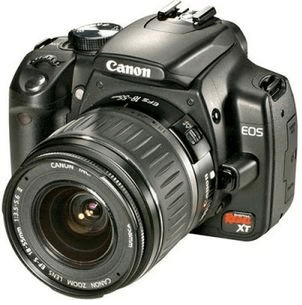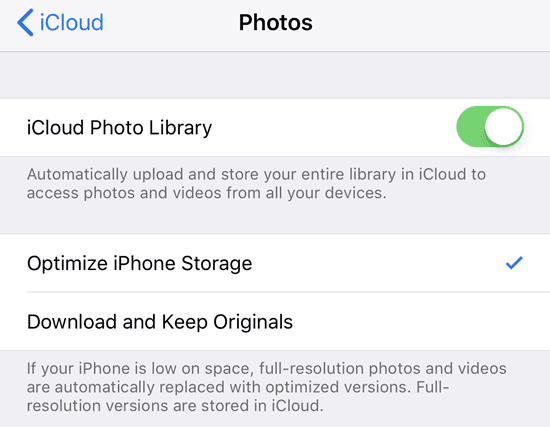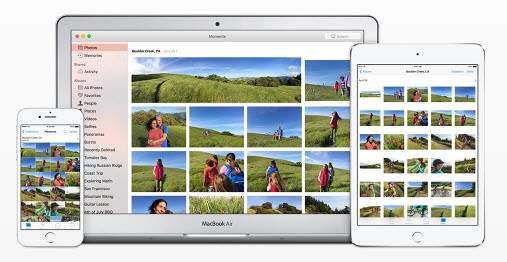Recently, I have several friends and they told me how they store all photos and videos on their computers or phones and even perform regular local backups to a USB disk or hard drive. out. This is definitely risky, which is why I think keeping a set of all your photos and videos online in the cloud is essential.
Uploading photos to the cloud has several advantages over storing them all locally:
1. You can easily share albums with others
2. You can access photos and videos anytime and often on other devices as long as you have an Internet connection
3. You have a backup of all your photos in case something happens to your local copy.
I always have a local copy of my images and then have a few copies stored in the cloud. Depending on the services you currently use, the best solution may vary for different people. In this article, I will try to mention some key ways to store your photos and videos in the cloud.

Before we get into the details, I want to talk about the source for all these photos and videos. In my case, there are basically three ways I photograph:
1. From my smartphone
2. From my DSLR camera
3. From my digital view camera
Photos and videos from smartphones
Storing photos and videos you take from your smartphone in the cloud is quite simple and has lots of options. For Android or iOS devices, you can use many built-in apps or features to upload photos and videos to the cloud, usually automatically.
Apple has iCloud Photo Library and it works pretty well most of the time. I have been using it for several years now and heaven has encountered any major problems. All you have to do is purchase additional iCloud storage and your media will be uploaded automatically after the feature is turned on.

For non-Apple users, there are quite a few options. The most popular options here are Google Photos, Dropbox, OneDrive or Flickr. The Google Photos app is my favorite and I use it in addition to buying iCloud storage.
If you don't use Google Photos or Picasa, etc., you can also use Dropbox. Dropbox is a service that basically allows you to easily drop ED files into an existing group on any device or computer where you have Dropbox installed. And Dropbox has an app for every platform out there, including Linux, Blackberry, Kindle Fire, etc.
Dropbox also has an automatic upload feature called Upload to camera, works exactly the same as the Google Photos app. Any photos you take will be automatically uploaded to your Dropbox account when you open the application. OneDrive works the same way.
So these apps can basically take care of all your photos from any smartphone you own. They work on tablets, smartphones, desktops, and on many other devices.
If you install a desktop program on your Mac or PC, it will also automatically sync all those photos and videos to your computer, so you have an additional backup on your hard drive in the field. where necessary.
There are other applications like Facebook, but it does not support automatic photo and video upload. However, I still upload photos to Facebook all the time, but I use Google Photos and Dropbox to store all my photos while I only upload a few nice photos to Facebook. Facebook is not set up to be used as a backup of all your photos and videos.
Photos and videos from digital cameras
Bringing photos from your digital camera to the cloud is a bit different, but it's not that complicated. You have pretty much the same options as mentioned above. The only problem with DSLR cameras is that the files can be very large, especially for things like 4K videos.
If you have a high-speed unmet Internet connection, you can drop all the files into one of your cloud-synced folders and everything will be uploaded. If you're in the Apple ecosystem, you'll need to use the Photos app in OS X to import media into your iCloud Photo Library. However, large video files will quickly eat up your storage space.

The best options for large RAW images and super high-resolution videos are external storage or locally mounted network. I previously wrote about setting up your own cloud storage using NAS devices. With this setup, you cannot upload anything, but you can access your media from anywhere.

Personally, I have found that using some of these services in combination will work best. On my phone, I use Google Photos and iCloud Photo Library to upload my photos and videos.
For RAW images and 4K footage from my digital camera, I usually back up to a large external hard drive and back up to my Synology NAS device. However, both copies are indigenous and I will lose everything if the house is burned down. To counter that, I set up an Amazon AWS account and backed up really huge files for Amazon Glacier, which was really cheap. I have more than 2 TB of data stored there and pay only 10 dollars a month. It was worth it to me.
Another useful feature of a service like Amazon Glacier is that you can save several terabytes of data to an external hard drive and Post it to Amazon. They will copy the data to their server locally, which prevents you from having to upload all that data over your home Internet connection.
Overall, it is a good idea to store your photos and videos in the cloud along with having a local backup. If you are still confused about something or need any other help, please post a comment and I will try to help. Enjoy!


0 Comments